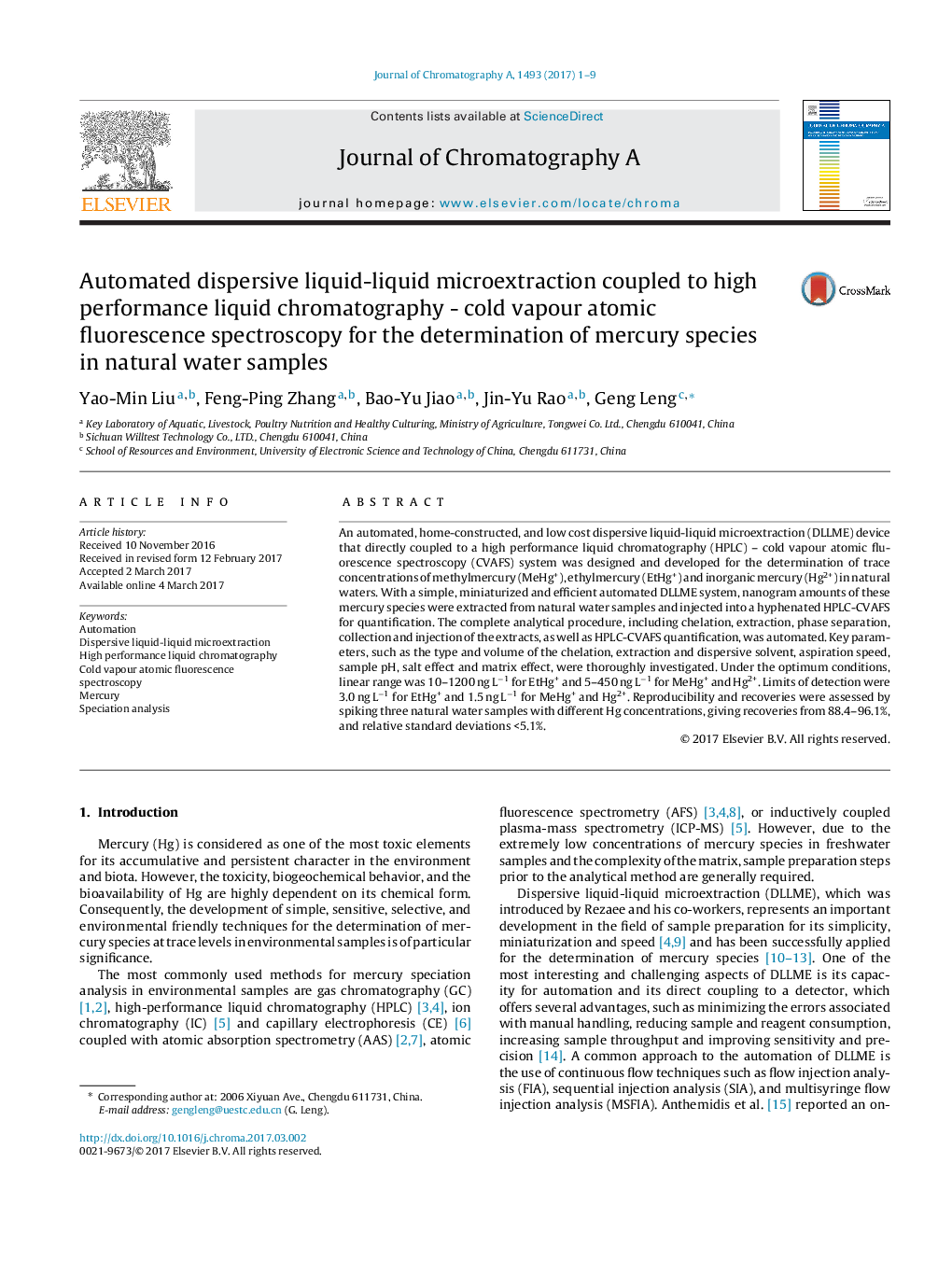| Article ID | Journal | Published Year | Pages | File Type |
|---|---|---|---|---|
| 5135502 | Journal of Chromatography A | 2017 | 9 Pages |
â¢Opens up an innovative new way to the automation of DLLME and its online coupling with HPLC-CVAFS.â¢Microvolume of extracts can accurately be collected and injected into HPLC- CVAFS without any loss and contamination.â¢Significant improvement in the analytical performance of Hg species was achieved compared with its manual modes.
An automated, home-constructed, and low cost dispersive liquid-liquid microextraction (DLLME) device that directly coupled to a high performance liquid chromatography (HPLC) - cold vapour atomic fluorescence spectroscopy (CVAFS) system was designed and developed for the determination of trace concentrations of methylmercury (MeHg+), ethylmercury (EtHg+) and inorganic mercury (Hg2+) in natural waters. With a simple, miniaturized and efficient automated DLLME system, nanogram amounts of these mercury species were extracted from natural water samples and injected into a hyphenated HPLC-CVAFS for quantification. The complete analytical procedure, including chelation, extraction, phase separation, collection and injection of the extracts, as well as HPLC-CVAFS quantification, was automated. Key parameters, such as the type and volume of the chelation, extraction and dispersive solvent, aspiration speed, sample pH, salt effect and matrix effect, were thoroughly investigated. Under the optimum conditions, linear range was 10-1200 ng Lâ1 for EtHg+ and 5-450 ng Lâ1 for MeHg+ and Hg2+. Limits of detection were 3.0 ng Lâ1 for EtHg+ and 1.5 ng Lâ1 for MeHg+ and Hg2+. Reproducibility and recoveries were assessed by spiking three natural water samples with different Hg concentrations, giving recoveries from 88.4-96.1%, and relative standard deviations <5.1%.
